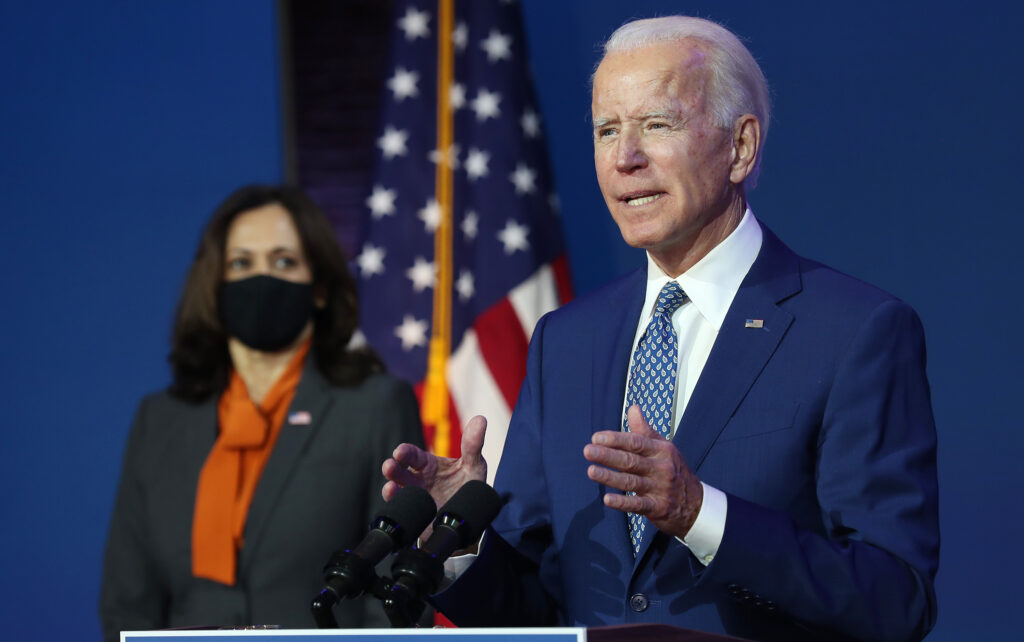President Joe Biden on Friday temporarily transferred power to Vice President Kamala Harris while he was under anesthesia for a routine colonoscopy for one hour and 25 minutes, according to the White House.
The nation’s first female, first Black and first South Asian vice president broke yet another barrier when she temporarily stepped into the acting role. Harris worked from her office in the West Wing while Biden was under anesthesia, according to Psaki.
“@POTUS spoke with @VP and @WHCOS at approximately 11:35am this morning. @POTUS was in good spirits and at that time resumed his duties. He will remain at Walter Reed as he completes the rest of his routine physical,” Psaki tweeted.
Biden, who turns 79 on Saturday, arrived Friday morning at Walter Reed Medical Center to undergo his first routine annual physical since taking office.
It’s routine for a vice president to assume presidential powers while the president undergoes a medical procedure that requires anesthesia. Then-Vice President Dick Cheney did so on multiple occasions when then-President George W. Bush underwent routine colonoscopies.
To officially transfer the presidential powers to Harris, Biden sent a letter to House Speaker Nancy Pelosi and Democratic Sen. Patrick Leahy of Vermont, the president pro tempore of the Senate, at 10:10 a.m. ET before going under anesthesia.

The letter reads: “Today I will undergo a routine medical procedure requiring sedation. In view of present circumstances, I have determined to transfer temporarily the powers and duties of the office of President of the United States to the Vice President during the brief period of the procedure and recovery.”
Section 3 of the 25th Amendment to the US Constitution says the President can send a letter to the speaker of the House of Representatives and the president pro tempore of the Senate declaring they are “unable to discharge the powers and duties of his office, and until he transmits to them a written declaration to the contrary, such powers and duties shall be discharged by the Vice President as Acting President.”
In order to transfer the powers back to Biden, a separate letter was sent after the procedure.
“In accordance with the provisions of section 3 of the Twenty-Fifth Amendment to the United States Constitution, I hereby transmit to you my written declaration that I am able to discharge the powers and duties of the Office of the President of the United States and that I am resuming those powers and duties,” the letter, which was sent to both Pelosi and Leahy, reads.
Earlier this year, former President Donald Trump’s ex-press secretary Stephanie Grisham heavily implied that Biden’s predecessor underwent a colonoscopy in a secret visit to Walter Reed in 2019, but kept it quiet to avoid transferring presidential power to then-Vice President Mike Pence.
In her book, “I’ll Take Your Questions Now,” Grisham does not use the term colonoscopy but heavily implies that’s what the trip was for. She says Trump’s hospital visit, which stirred weeks-long speculation about his health was a “very common procedure,” during which “a patient is put under.” She also writes that Bush had a similar procedure while in office. Grisham writes Trump did not want then-Vice President Mike Pence to be in power while he was sedated, which was part of the reason he kept his visit private. He also “did not want to be the butt of a joke” on late-night television, writes Grisham.
Biden is the oldest first-term president in US history, and the last comprehensive update on Biden’s medical history came nearly two years ago when his presidential campaign released a three-page summary of his medical history in December 2019.
Dr. Kevin O’Connor, Biden’s primary care doctor since 2009, described Biden as “a healthy, vigorous, 77-year-old male,” at the time.
The 2019 summary showed Biden was being treated for non-valvular atrial fibrillation, or AFib — an irregular heartbeat that O’Connor said Biden experiences no symptoms of. He was taking Crestor to lower cholesterol and triglyceride levels, as well as Eliquis to prevent blood clots, Nexium for acid reflux, and Allegra and a nasal spray for seasonal allergies.
The most significant medical event in Biden’s history, O’Connor wrote, was when Biden suffered a brain aneurysm in 1988. He was serving in the Senate at the time. During surgery, doctors found a second aneurysm that had not bled, which they also treated.
While in the hospital after that surgery, Biden suffered deep vein thrombosis and a pulmonary embolism. Doctors at the time inserted an “inferior vena cava filter,” which would prevent future blood clots from reaching the heart and lungs and treated him with an oral anti-coagulant for several months.
CNN